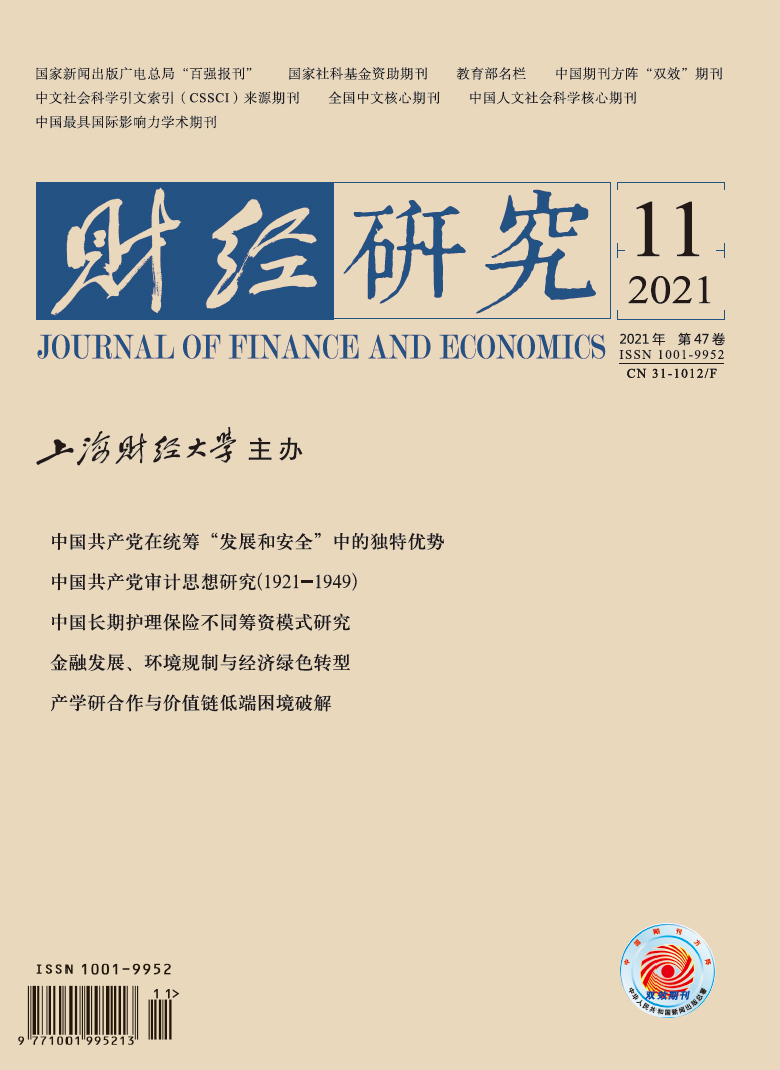在“一带一路”倡议下,中国企业“走出去”逐渐成为产业升级和发展的重要战略途径。然而,许多中国企业在跨国经营过程中面临外来者劣势,包括受到合法性质疑,面临退出威胁。文章选取柬埔寨泰文隆水泥有限公司的案例,基于社会网络分析视角,识别了外来者劣势的来源,探讨了外来者劣势转化为优势的模式。文章得出以下结论:第一,在“一带一路”倡议下,东道国政企关系和产业链关系是外来者劣势的重要来源;第二,伴随中国企业跨国经营的开展,克服外来者劣势的焦点从国家层面逐渐转到产业层面,外来者劣势转化为优势的关键在于匹配合理的产业链网络;第三,母国政府支持、技术转移和产业集聚可以促进外来者的产业链劣势转化为优势,克服外来者劣势的模式可以总结为多网络差异化模式、外来者集中化模式和产业组织集中化模式三种。文章的研究结论对于推动“一带一路”高质量发展和支持中国民营企业“走出去”具有重要的启示。
“一带一路”倡议下外来者劣势如何转化为优势?——基于社会网络视角的案例分析
摘要
参考文献
2 陈衍泰,厉婧,程聪,等. 海外创新生态系统的组织合法性动态获取研究−以“一带一路”海外园区领军企业为例[J]. 管理世界,2021,(8):161−179. DOI:10.3969/j.issn.1002-5502.2021.08.013
5 李亮, 刘洋, 冯永春. 管理案例研究: 方法与应用[M]. 北京: 北京大学出版社, 2020.
11 肖钢. 制度型开放: 构建“一带一路”投融资新体系[M]. 北京: 中国金融出版社, 2019.
14 Asakawa K,Park Y,Song J,et al. Internal embeddedness,geographic distance,and global knowledge sourcing by overseas subsidiaries[J]. Journal of International Business Studies,2018,49(6): 743−752. DOI:10.1057/s41267-017-0112-x
15 Barnard H. Overcoming the liability of foreignness without strong firm capabilities:The value of market-based resources[J]. Journal of International Management,2010,16(2): 165−176. DOI:10.1016/j.intman.2010.03.007
16 Burt R S. Structural holes: The social structure of competition[M]. Cambridge: Harvard University Press, 2009.
17 Carpenter M A,Li M X,Jiang H. Social network research in organizational contexts[J]. Journal of Management,2012,38(4): 1328−1361. DOI:10.1177/0149206312440119
18 Deng P. Chinese outward direct investment research:Theoretical integration and recommendations[J]. Management and Organization Review,2013,9(3): 513−539. DOI:10.1111/more.12030
19 Denk N,Kaufmann L,Roesch J F. Liabilities of foreignness revisited:A review of contemporary studies and recommendations for future research[J]. Journal of International Management,2012,18(4): 322−334. DOI:10.1016/j.intman.2012.07.001
20 Eden L, Miller S R. Distance matters: Liability of foreignness, institutional distance and ownership strategy[A]. Hitt M A, Cheng J L C. Theories of the multinational enterprise: Diversity, complexity and relevance (Advances in international management)[C]. Bingley: Emerald Group Publishing Limited, 2004.
21 Edman J. Reconciling the advantages and liabilities of foreignness:Towards an identity-based framework[J]. Journal of International Business Studies,2016,47(6): 674−694. DOI:10.1057/jibs.2016.29
22 Granovetter M. Economic action and social structure:The problem of embeddedness[J]. American Journal of Sociology,1985,91(3): 481−510. DOI:10.1086/228311
23 Hennart J F,Roehl T,Zeng M. Do exits proxy a liability of foreignness?[J]. Journal of International Management,2002,8(3): 241−264. DOI:10.1016/S1075-4253(02)00065-0
25 Hymer S H. The international operations of national firms: A study of direct foreign investment[M]. Cambridge: Massachusetts Institute of Technology, 1976.
28 Jiang H,Xia J,Cannella A A,et al. Do ongoing networks block out new friends?Reconciling the embeddedness constraint dilemma on new alliance partner addition[J]. Strategic Management Journal,2018,39(1): 217−241. DOI:10.1002/smj.2695
29 Joardar A,Wu S B. Liabilities and benefits:Examining the two sides of the foreignness coin from entrepreneurial perspective[J]. International Business Review,2017,26(6): 1157−1167. DOI:10.1016/j.ibusrev.2017.04.008
30 Johanson J,Vahlne J E. The Uppsala internationalization process model revisited:From liability of foreignness to liability of outsidership[J]. Journal of International Business Studies,2009,40(9): 1411−1431. DOI:10.1057/jibs.2009.24
31 Kostova T,Zaheer S. Organizational legitimacy under conditions of complexity:The case of the multinational enterprise[J]. The Academy of Management Review,1999,24(1): 64−81. DOI:10.5465/amr.1999.1580441
32 Langley A. Strategies for theorizing from process data[J]. The Academy of Management Review,1999,24(4): 691−710. DOI:10.5465/amr.1999.2553248
33 Li P P. Toward an integrated theory of multinational evolution:The evidence of Chinese multinational enterprises as latecomers[J]. Journal of International Management,2007,13(3): 296−318. DOI:10.1016/j.intman.2007.05.004
34 Li Y,Zhang Y A,Shi W. Navigating geographic and cultural distances in international expansion:The paradoxical roles of firm size,age,and ownership[J]. Strategic Management Journal,2020,41(5): 921−949. DOI:10.1002/smj.3098
35 Luo Y D,Shenkar O,Nyaw M K. Mitigating liabilities of foreignness[J]. Journal of International Management,2002,8(3): 283−300. DOI:10.1016/S1075-4253(02)00073-X
36 Mallon M R,Fainshmidt S. Assets of foreignness:A theoretical integration and agenda for future research[J]. Journal of International Management,2017,23(1): 43−55. DOI:10.1016/j.intman.2016.08.001
37 Meyer K E,Mudambi R,Narula R. Multinational enterprises and local contexts:The opportunities and challenges of multiple embeddedness[J]. Journal of Management Studies,2011,48(2): 235−252. DOI:10.1111/j.1467-6486.2010.00968.x
38 Morck R,Yeung B,Zhao M Y. Perspectives on China’s outward foreign direct investment[J]. Journal of International Business Studies,2008,39(3): 337−350. DOI:10.1057/palgrave.jibs.8400366
39 Nachum L. When is foreignness an asset or a liability? Explaining the performance differential between foreign and local firms[J]. Journal of Management,2010,36(3): 714−739. DOI:10.1177/0149206309338522
40 Nocke V,Yeaple S. Cross-border mergers and acquisitions vs. greenfield foreign direct investment:The role of firm heterogeneity[J]. Journal of International Economics,2007,72(2): 336−365. DOI:10.1016/j.jinteco.2006.09.003
41 Phillips D J,Turco C J,Zuckerman E W. Betrayal as market barrier:Identity-based limits to diversification among high-status corporate law firms[J]. American Journal of Sociology,2013,118(4): 1023−1054. DOI:10.1086/668412
42 Rugman A M,Verbeke A. Corporate strategies and environmental regulations:An organizing framework[J]. Strategic Management Journal,1998,19(4): 363−375. DOI:10.1002/(SICI)1097-0266(199804)19:4<363::AID-SMJ974>3.0.CO;2-H
43 Sethi D,Guisinger S. Liability of foreignness to competitive advantage[J]. Journal of International Management,2002,8(3): 223−240. DOI:10.1016/S1075-4253(02)00067-4
44 Sethi D,Judge W. Reappraising liabilities of foreignness within an integrated perspective of the costs and benefits of doing business abroad[J]. International Business Review,2009,18(4): 404−416. DOI:10.1016/j.ibusrev.2009.02.006
45 Snijders T A B,van de Bunt G G,Steglich C E G. Introduction to stochastic actor-based models for network dynamics[J]. Social Networks,2010,32(1): 44−60. DOI:10.1016/j.socnet.2009.02.004
46 Stoyanov S,Woodward R,Stoyanova V. The embedding of transnational entrepreneurs in diaspora networks:Leveraging the assets of foreignness[J]. Management International Review,2018,58(2): 281−312. DOI:10.1007/s11575-017-0336-9
47 Wei T,Clegg J. Overcoming the liability of foreignness in internationalization in emerging economies:Lessons from acquiring a Chinese firm[J]. Thunderbird International Business Review,2015,57(2): 103−117. DOI:10.1002/tie.21658
48 Yildiz H E,Fey C F. The liability of foreignness reconsidered:New insights from the alternative research context of transforming economies[J]. International Business Review,2012,21(2): 269−280. DOI:10.1016/j.ibusrev.2011.03.002
49 Yin R K. Case study research: Design and methods[M]. Thousand Oaks, CA: Sage Publications, 2009.
51 Zaheer S. Overcoming the liability of foreignness[J]. Academy of Management Journal,1995,38(2): 341−363.
52 Zhou L X,Wu W P,Luo X M. Internationalization and the performance of born-global SMEs:The mediating role of social networks[J]. Journal of International Business Studies,2007,38(4): 673−690. DOI:10.1057/palgrave.jibs.8400282
引用本文
祝继高, 龙沐晨, 朱佳信. “一带一路”倡议下外来者劣势如何转化为优势?——基于社会网络视角的案例分析[J]. 财经研究, 2021, 47(11): 139-153.
导出参考文献,格式为:






 6591
6591  9286
9286

